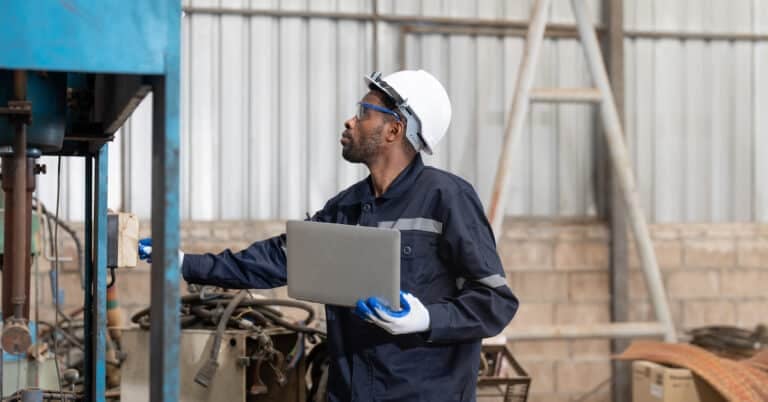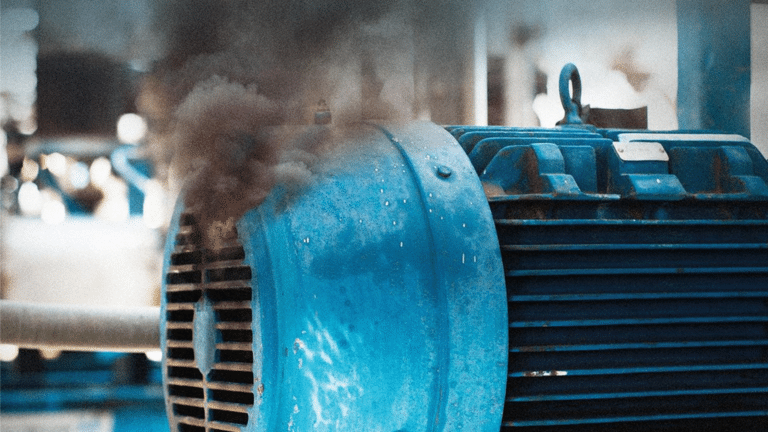Key Performance Indicators or KPIs are essential in reviewing the performance of the different areas of a company. Having KPIs is similar to using a roadmap to reach a particular destination or goal. KPIs help monitor the progress and implementation of the steps needed to achieve that goal. Assigning KPIs to a lubrication program helps in measuring its success. Effective KPIs should reveal whether the program is executing lubrication steps properly, achieving the target reliability, and if your team is implementing it efficiently. Thus, the success of your lubrication program depends on choosing effective lubrication KPIs. However, your team is already spread thin. So, how do you make sure your lubrication KPIs aren’t creating busy work?
In this article, we will discuss lubrication KPIs and the common factors that make them ineffective in measuring your lubrication goals. Understanding these factors helps in achieving effective KPIs for your lubrication program.
What Makes KPIs Effective?
Effective KPIs depend on the right goals. Poor goal-setting results in useless KPIs that only add costs and waste time and other resources. Following the principles of SMART goals outlined below helps set the right goals for your lubrication program. And with the right goals, you can assign and maintain effective KPIs.
S – Specific
Goals should be clear and detailed. A vague goal with a broad scope is harder to achieve because it requires numerous steps. It is more effective to break down a large goal into smaller goals so you can focus and prioritize one step or area at a time.
M – Measurable
Measurable goals make it easy to assess your progress. A quantifiable goal lets you gather data, record and analyze them, and identify what steps to take to improve the data. This process facilitates the achievement of the goal and decreases the chance of going off track.
A – Achievable
Achievable goals should consider what is realistic for your situation. What is ideal for others may not apply to you and only set up impossible tasks for your facility. Reaching achievable goals also provides successful experience and real progress, thus motivating teams to go for higher goals.
R – Relevant
Goals should also be aligned with a general objective and connected to a larger goal. It is wasteful to go after a goal if the results of which are not valuable for achieving another one. Relevant and interconnected goals that evolve with the company are the key to its success.
T – Time-bound
Goals should have a specific start and end. Deadlines and time frames keep teams on track pushing and motivating them to action. Assigning deadlines also makes it easy to plan all the necessary steps to reach goals.
The success of your lubrication program, therefore, depends on you identifying SMART goals and the right lubrication KPIs to monitor and track them.
Lubrication KPIs and What Makes Them Ineffective
The following is a list of lubrication-related KPIs and the factors that make them ineffective for tracking and monitoring your lubrication program goals.
1. Lubrication Route Effectiveness
Measuring lubrication route effectiveness is useless until the processes for routes are well-defined. This lubrication KPI becomes an ineffective measure of lubrication success if route duties are uncategorized and unoptimized by:
- Type
- Frequency
- Necessary Skills
- Operating Situation (ON/OFF)
- Lubricant Type
- Geographic Location
- Or Other Factors (depending on your facility)
Furthermore, this KPI becomes ineffective if people who run the routes have not received the necessary training in best practices. Finally, this KPI does not reflect the actual lubrication route effectiveness if task times are not measured, appropriate resources are unavailable, and activities are not efficiently scheduled, sequenced, etc.
2. Lubrication Inspection Effectiveness
Monitoring the lubrication inspection effectiveness can also become an ineffective KPI. This lubrication KPI fails its purpose when:
- Machines are not modified for effective inspection
- Proper inspection equipment and tools are unavailable
- Technicians are not trained in proper machinery lubrication.
Measuring lubrication effectiveness is also useless if there are no comprehensive mechanisms for monitoring anomalous circumstances.
3. Downtime Due to Lubrication Tasks
The unavailability of machines or production loss hours related to lubrication tasks is another KPI that can easily become an ineffective measure of lubrication success. Downtime due to lubrication tasks is useless if:
- You don’t perform Root Cause Analysis (RCA) and Failure Mode and Effects Analysis (FMEA)
- There are no established “rights of lubrication” for each measured component
- There is no emphasis on proactive and predictive maintenance.
4. Total Lubricant Consumption
Measuring the total lubricant consumption is not indicative of the success of lubrication goals if the volume of oil utilized for oil drums and oil flushes is not measured and the volume of oil lost due to leaks is not estimated. Also, there is no sense in tracking lubricant consumption if oil analysis is not used to determine condition-based oil changes. And finally, total lubrication consumption is not an effective lubrication KPI if grease relubrication is not derived by accurate calculations or feedback equipment that identify regrease volume and intervals.
5. Lubrication Technician Training and Certification Plan Compliance
The compliance of training and certification plans for lubrication technicians becomes an ineffective KPI without the necessary resources to reinforce their training and certification. These resources can include training courses, books, or other reference materials, and even the time away from their duties and activities to prepare for their courses. In addition, this KPI is useless if technicians are unaware of the benefits or pay incentives for becoming certified or successfully implementing lubrication improvements.
6. Overall Lubrication Program Effectiveness
Monitoring the overall lubrication program effectiveness can also become a useless KPI unless a lubricant champion is identified and provided with resources, support, and power to make the necessary changes to the program. Another factor that can render this KPI useless is the absence of a training plan to create awareness of lubrication initiatives across the organization to lessen pushback and resistance to change. Finally, you need not assess the overall lubrication program effectiveness if all six lubricant lifecycle stages are not being taken into consideration.
Effective Lubrication KPIs with Lubrication Management Software
Setting SMART goals and effective KPIs form the foundation of an effective and efficient lubrication program. But the creation and implementation of goals and KPIs can be challenging and expensive tasks. Managers struggling with these tasks turn to lubrication management software like Redlist, and they’ve never looked back. With Redlist, it’s easier and less expensive to track and monitor your lubrication KPIs, ensuring they stay effective and aligned with your lubrication program goals. If you’d like to learn more, schedule a free demo with a Redlist team member.


